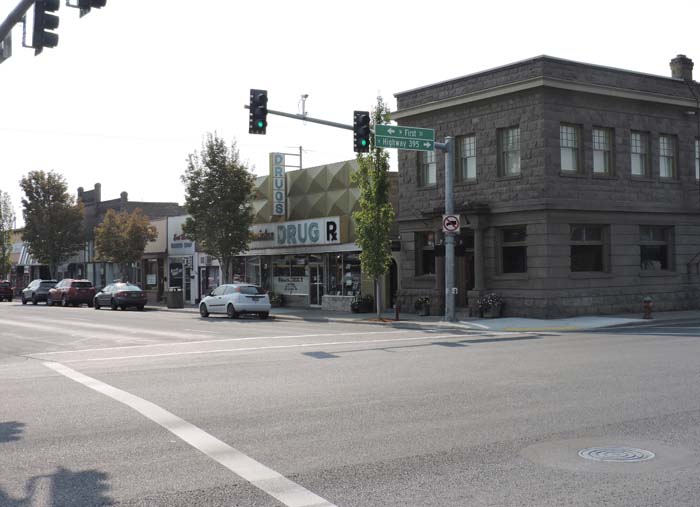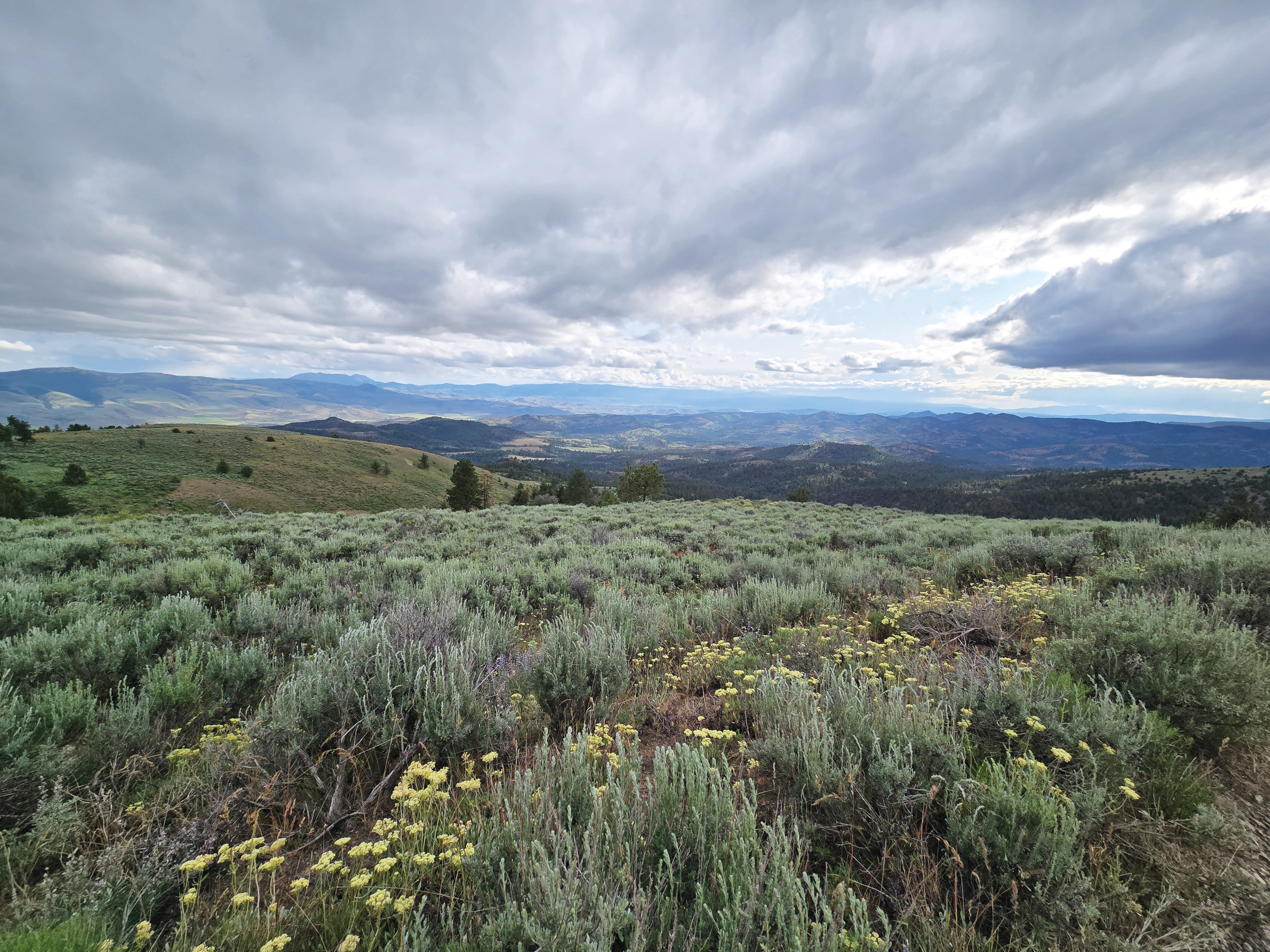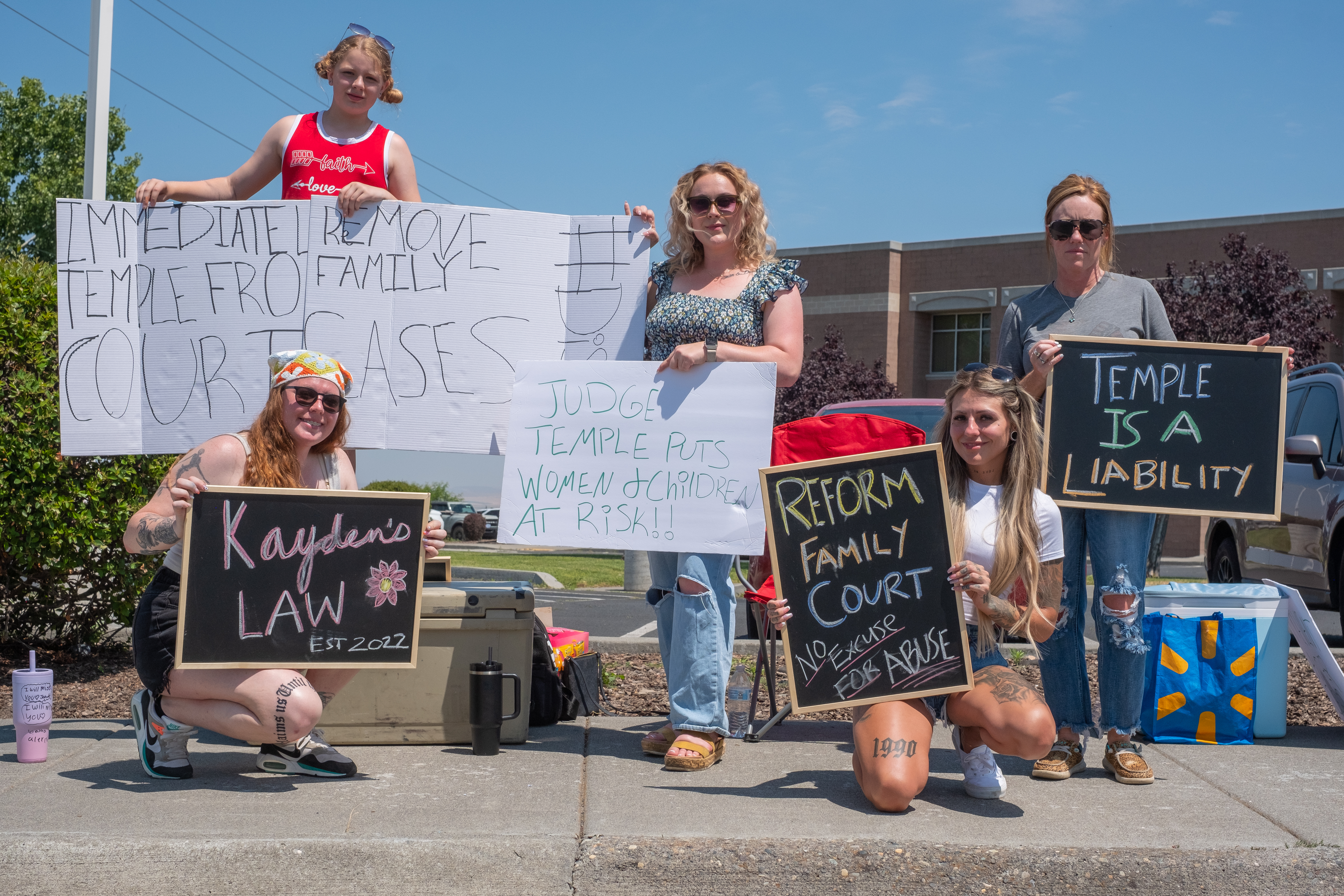The rest is history
Published 5:06 am Wednesday, August 15, 2018

- Staff photo by Jade McDowell. Hermiston's Main Street today.
Preservation of Hermiston’s limited historic buildings is a struggle
By JADE McDOWELL
Staff Writer
Hermiston only has one museum, and most of its residents haven’t even been there.
“People say, ‘I’ve lived here all my life and never heard of that,’” Connie Maret said.
Maret runs the Maxwell Siding Train Museum next to Hodge Park with John Spinden, offering up tours for a few hours each Saturday of antique train cars “chock full” of historical artifacts from Hermiston and the railroad. A majority of the free museum’s visitors are from out of town.
Maret and Spinden would love to pass the museum on to some younger volunteers (at age 84, Maret said, he’s “no spring chicken.”). But they have had trouble interesting the next generation of Hermiston residents in preserving the town’s history, of which the railroad is a major player.
“I know the stuff I’ve saved ever since I was a little bitty kid, my kids won’t want it,” he said. “Once it’s gone, it will never come back.”
There are pieces of Hermiston’s history that have been preserved, in boxes of photographs at locals’ homes and a few scattered historic buildings. An archway from the last iteration of Armand Larive Middle School stands near the public library as a testament to the many school buildings Hermiston has seen come and go over its more than century-long history. But Hermiston doesn’t have any buildings on the National Register of Historic Places, despite being the biggest city in a county that has 42 sites on the registry (Pendleton has 16 of those; Echo has 10).
Carlisle Harrison, one of Hermiston’s history enthusiasts, said some of Hermiston’s lack of historical preservation has to do with how the town developed. It was small and very poor for the first few decades of its existence (the town was incorporated in 1907), then saw a population explosion during the building of the McNary Dam and Umatilla Chemical Depot in the 1940s. At that point no one was as worried about eye-pleasing architecture as they were about getting buildings up fast and cheap.
The results, he said, were a lot of buildings that were “nothing to write home about” and not built to last into the next century.
“Things were practical and inexpensive,” he said. “In Pendleton the moneyed wheat farmers came into town and built nice houses.”
Harrison said that wasn’t necessarily a bad thing — it contributed to the reputation Hermiston still has today of being a friendly, welcoming town where it doesn’t matter whether you were born there.
“In some respects, people had more to do with each other and not so much with the things we have,” he said.
It has also made it easier to develop and modernize without worrying about historic preservation.
The downside is that today Hermiston lacks the “historic downtown” approach to draw tourists. There is no grand, historic city hall building. The Oasis theater that used to sit on Main Street is gone, as is the old hotel. A tall brick cathedral with stained glass windows from the early days of the city was replaced with a Chevron station.
Dick Lowry, another of Hermiston’s unofficial historians, said Hermiston “tends to tear things down” to clear the way for new buildings. None of the schools Lowry attended are still standing. He was particularly sad to see the old Sandstone school building go, as he remembered hoping for a fire drill as a student so he could go down the giant slide that served as a fire escape.
“It was just a great old building and they tore it down,” he said. “There were some other great buildings torn down. Some just wore out, like the Old Oregon Hotel.”
He said Hermiston has some old homes around still, but they blend in, such as L.A. Moore’s old home on the corner of Highland Avenue and 11th Street.
“That’s nothing spectacular, and he was a millionaire,” he said.
Preservation projects
Hermiston does have a few historic buildings that residents are working to preserve. Mitch Myers has renovated a number of historic buildings over the years. He turned a 75-year-old car dealership building into Nookies Restaurant and more recently turned a railroad storage building from 1914 into the Maxwell Siding Event Center.
He is currently working on two other preservation projects. He is turning the “coal bin building” off of North First Place into a retail/restaurant space he plans to lease to businesses that will “pay honor to that building,” which he believes is the oldest in Hermiston.
Myers is also working on the building on the corner of Highway 395 and Main Street that housed Hermiston’s first bank in 1910. F.B. Swayze, the bank’s owner, was a powerful influence in Hermiston for decades and the first place people stopped when they arrived. While the main floor held the bank operations, Swayze used affordable rental space upstairs to entice a doctor, dentist, optometrist and other services to Hermiston over the years.
“He was a real driver in the area,” Myers said.
The main floor has been used for retail space in recent decades, but when Myers purchased it he was able to track down several original aspects of the bank, including the teller’s desk, and restore it to the building. What he couldn’t find original, he restored as close as he could get, including $200,000 worth of mahogany. He is using the downstairs as offices for his company, Mitco Investments.
Now Myers has turned his attention to the upstairs, which had been stripped down to the floor joists and become a mess of rot and dead pigeons.
“If we hadn’t come in when we did, the way the roof was pulling it, I’d say within five years we would have lost the downstairs too,” he said.
Instead Myers poured resources into rescuing and rebuilding the upstairs, restoring it to a three-bedroom apartment he plans to rent out by the night. He is attempting to restore it to as close as possible to its original Victorian look, tracking down everything from furniture to floor tiles to stained glass windows from that era. He purchased the vividly-patterned wallpapers from a specialist in New York that uses authentic old-time presses and techniques to replicate what the wallpaper of the day would look and feel like.
“You’ll be paying to get a glimpse of 1910,” Myers said.
He plans to have an open house for the public once the project is completed within the next few weeks.
Down the street a renovation of another of Hermiston’s historic buildings is underway as a group of investors turns the old RoeMark’s building — built in 1907 and home to numerous businesses over the last century — back into the Union Club, a bar that existed during Hermiston’s mid-century boom.
Myers said a group of roughly 25 citizens have revived the Hermiston Heritage Association and are working on creating a list of buildings in Hermiston they will ask the city council to provide special protections for.
“It’s way too easy to tear something down and put up an ugly brick building,” he said, noting the environmental and structural challenges that come with renovating historic buildings.
Preserving artifacts
Preserving history isn’t just about buildings. Barbara Lund-Jones, executive director of the Umatilla County Historical Society, said the society’s museum in Pendleton does have a Hermiston exhibit, but the society would love to add to its small collection of artifacts from Hermiston’s history.
“That is one area in which we would like to expand,” she said. “… Hermiston’s story is very important, and we would certainly be encouraging people to share more of that.”
Items currently on display include information on the two rival companies that helped create Hermiston and the history of the Umatilla Army Depot. It also points out that the Shari’s restaurant chain began with a restaurant in Hermiston.
“We have the very first uniform worn by the very first waitress on the very first day,” she said.
Lund-Jones said it doesn’t matter if Umatilla County communities are preserving their own history through their own museums or donating items to the historical society, “as long as it is being preserved.”
Contact Jade McDowell at jmcdowell@eastoregonian.com or 541-564-4536.






